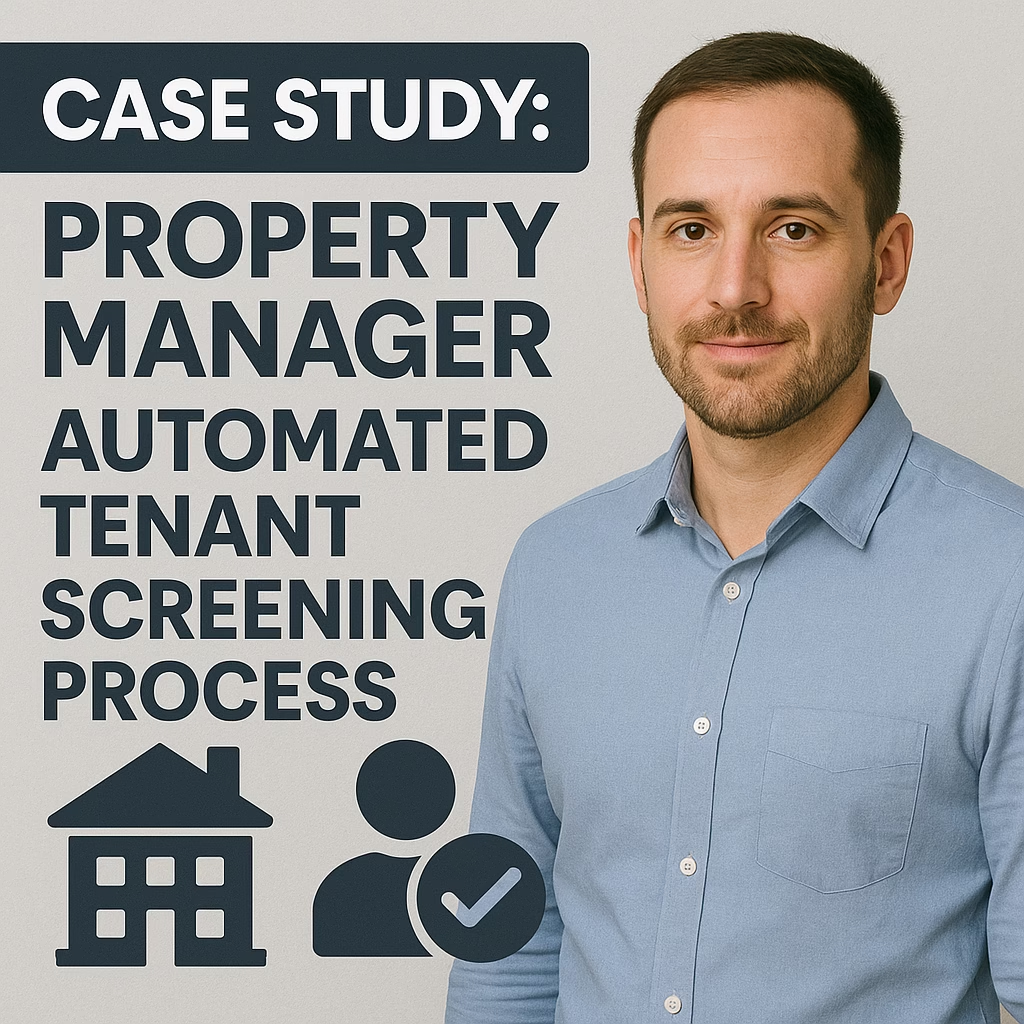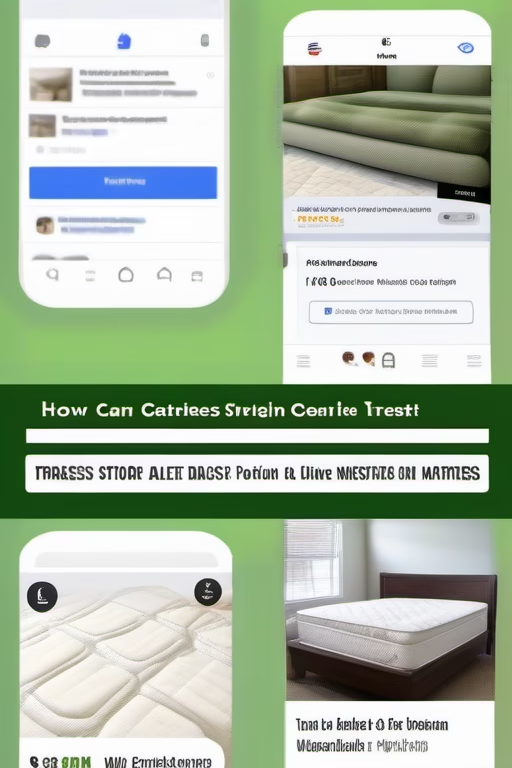Case Study: Property Manager Automated Tenant Screening Process
Faster decisions, stronger compliance, fewer disputes—without sacrificing fairness or accuracy.
Introduction
Case Study: Property Manager Automated Tenant Screening Process shows how a 2,500-unit regional PM firm replaced manual checks with an automated, policy-driven workflow: identity verification (IDV), credit/criminal/eviction reports, income verification, scorecard rules, and compliant notices. The result was a dramatic cut in time-to-decision, clear audit trails, and better outcomes with fewer edge-case escalations.
Compliance Note: This article is for informational purposes only and is not legal advice. Confirm federal (FCRA/FHA), state, and local requirements; obtain written consent; and follow adverse action procedures.
Expanded Table of Contents
- 1) Snapshot & Goals
- 2) Baseline Metrics (before automation)
- 3) Solution Architecture & Data Flow
- 4) Data Sources & Vendors
- 5) Screening Policy & Scorecard
- 6) Human-in-the-Loop Reviews
- 7) End-to-End Automated Workflow
- 8) PMS/CRM Integration & Webhooks
- 9) SLAs, Alerts & Escalations
- 10) Security, Privacy & Retention
- 11) Results: 30/60/90-Day Impact
- 12) ROI Math & Break-Even
- 13) Ops Playbook (Daily/Weekly)
- 14) Edge Cases & Manual Overrides
- 15) Experiments & Policy Tuning
- 16) 30–60–90 Implementation Timeline
- 17) Roles & RACI
- 18) Troubleshooting Checklist
- 19) Glossary
- 20) 25 Frequently Asked Questions
- 21) 25 Extra Keywords
1) Snapshot & Goals
Company
- 2,500 units across urban/suburban markets
- Mixed portfolio (multifamily, SFR, small retail)
Primary Goals
- Cut decision time without lowering quality
- Reduce disputes via consistent notices
- Centralize policy and improve auditability
2) Baseline Metrics (before automation)
| KPI | Before | Pain |
|---|---|---|
| Time-to-decision | 22–48 hours | Manual back-and-forth, staff bottlenecks |
| Dispute rate | 5.6% | Inconsistent notes and documentation |
| Manual effort | 35–45 min/app | Copy/paste, email chasing |
| Compliance risk | Medium | Inconsistent adverse action language |
3) Solution Architecture & Data Flow
Applicants complete a consented form → IDV → reports (credit/criminal/eviction) → income verification → scorecard → human review (if needed) → decision → automated communications (approval, conditional approval, or adverse action).
Form (e-sign + consent)
→ IDV (document + liveness)
→ Reports (credit • criminal • eviction)
→ Income/Employment (payroll API or bank)
→ Scorecard (policy rules + cutoffs)
→ Human Review (only edge cases)
→ Decision (approve/conditional/deny)
→ Notices (approval & adverse action)
→ PMS Update (status + artifacts + logs)4) Data Sources & Vendors
- IDV & Fraud: document scan, selfie liveness, device fingerprint
- Credit/Criminal/Eviction: CRA-provided reports with permissible purpose
- Income/Employment: payroll APIs or bank link (with consent)
- References: optional landlord verification templates
5) Screening Policy & Scorecard
The scorecard encodes your neutral, location-aware policy. Each attribute contributes points; cutoffs map to approve, conditional, or deny. Document versions and store them with every decision.
| Factor | Example Rule | Scoring Impact |
|---|---|---|
| Income-to-rent | ≥ 3× rent → full points; 2.5–3× → partial | +0 to +25 |
| Credit | Score bands with recent derogatories weighting | -10 to +25 |
| Evictions | Recent confirmed eviction reduces score | -25 to 0 |
| Criminal | Local rules and lookback windows applied | Policy-dependent |
| Rental history | On-time payments and positive references | +0 to +15 |
Fairness check: run periodic disparate-impact reviews; avoid proxy variables; log rationale with each outcome.
6) Human-in-the-Loop Reviews
- Trigger when IDV fails or documents conflict
- Escalate when score is within a small “gray zone”
- Require dual sign-off on denials where local rules mandate
7) End-to-End Automated Workflow
Trigger: New application submitted (with consent)
1) IDV & fraud checks → fail = hold + request resubmission
2) Pull credit/criminal/eviction via CRA
3) Income verify (payroll/bank) or request docs
4) Compute score + run policy rules
5) If edge case → assign reviewer SLA 4 hours
6) Decision outcome recorded (policy version stamped)
7) Generate and send approval/conditional/adverse action
8) Update PMS + attach artifacts + lock logs
9) Weekly KPI digest to ops/ownership8) PMS/CRM Integration & Webhooks
- Incoming webhooks create “Applicant” records and tasks
- Outgoing webhooks post status, score, and document links
- Role-based access for leasing vs. compliance users
9) SLAs, Alerts & Escalations
- 2 hours: target decision for complete applications
- Automatic alerts for stalled employer verifications
- Daily exception report for unresolved reviews
10) Security, Privacy & Retention
- Encrypt PII at rest and in transit; restrict export
- Least-privilege access; SSO; periodic access reviews
- Retention schedule by jurisdiction; defensible deletion
11) Results: 30/60/90-Day Impact
| KPI | Before | After 90 Days | Delta |
|---|---|---|---|
| Time-to-decision | 22–48 hrs | 2–6 hrs | -73% |
| Manual effort/app | 35–45 min | 8–12 min | -70%+ |
| Dispute rate | 5.6% | 2.1% | -3.5 pts |
| Document errors | High | Low | ↓ due to templates |
12) ROI Math & Break-Even
| Variable | Example |
|---|---|
| Apps/month | 350 |
| Labor saved/app | ~30 minutes |
| Hourly fully-loaded cost | $28 |
| Labor savings | 350 × 0.5 × $28 = $4,900/mo |
| Tooling & vendor fees | $1,600/mo |
| Net monthly impact | $3,300 positive (ex-bad-debt benefits) |
13) Ops Playbook (Daily/Weekly)
Daily
Work SLA queue; resolve flags; send pending document requests.
Weekly
Audit 10 random decisions; review disputes; refresh policy language.
Monthly
Fairness checks; threshold tuning; retention & access reviews.
14) Edge Cases & Manual Overrides
- Name/DoB mismatches → request re-IDV
- Zero/limited credit → income + references weighting
- Local rule conflicts → location-specific policy branch
15) Experiments & Policy Tuning
- Threshold A/B: approve cutoff ±10 points
- Income-to-rent tolerance by submarket
- Alt-data inclusion (bank cashflow) impacts
16) 30–60–90 Implementation Timeline
Days 1–30 (Foundation)
- Consent language + disclosures finalized
- IDV + CRA + income vendor connections
- Scorecard v1 configured; logs enabled
Days 31–60 (Momentum)
- PMS integration + webhook events
- Adverse action/approval templates live
- Reviewer SLAs; exception dashboards
Days 61–90 (Scale)
- Fairness review + threshold tuning
- Backtests; policy v2 rollout
- Monthly audit & retention automation
17) Roles & RACI
| Area | R | A | C | I |
|---|---|---|---|---|
| Policy & scorecard | Compliance | Owner | Leasing | IT |
| Integrations | IT/Ops | CTO/Dir Ops | Vendors | Team |
| Notices & templates | Compliance | Owner | Legal | Leasing |
| Audits & fairness | Compliance | Owner | Legal | Team |
18) Troubleshooting Checklist
| Symptom | Likely Cause | Fix |
|---|---|---|
| Decisions stuck “pending” | Employer/API delay | Auto-remind; allow paystub upload fallback |
| High dispute volume | Notice gaps or unclear policy | Improve templates; add reviewer notes field |
| False denials | Over-strict cutoffs | Run backtest; widen gray-zone human review |
19) Glossary
FCRA: US law governing consumer reports. Adverse Action: Denial/changed terms based on a consumer report. IDV: Identity verification. CRA: Consumer Reporting Agency.
20) 25 Frequently Asked Questions
1) What is this case study about?
An end-to-end automated tenant screening process.
2) Is automated screening legal?
Yes, when FCRA/FHA compliant.
3) Do applicants need to consent?
Yes—written authorization is required.
4) Which reports are used?
IDV, credit, criminal, eviction, income.
5) How fast is it?
Minutes for most checks; hours if manual steps.
6) What about no SSN?
Use alt-ID; expect more manual review.
7) Thin credit files?
Lean on income and references.
8) Co-signers?
Supported; screened the same way.
9) Adverse action?
Provide compliant notices with CRA details.
10) Preventing discrimination?
Neutral criteria + fairness audits.
11) Varying local rules?
Use location-aware policy branches.
12) Income verification?
Payroll APIs, bank links, or documents.
13) PMS integrations?
Yes—via APIs/webhooks.
14) Fraud reduction?
IDV + device/document checks.
15) Auditability?
Immutable decision logs and artifacts.
16) Threshold tuning?
Backtests + monthly reviews.
17) Disputes?
Pause and route through CRA process.
18) Data retention?
Follow policy and law; minimize.
19) Cost?
$15–$60/app + tools; labor savings offset.
20) Key KPIs?
Time-to-decision, disputes, bad-debt.
21) Alternative data?
Yes, with consent and scrutiny.
22) Pet/parking rules?
Add policy Qs and addenda.
23) International applicants?
Passport/ITIN, extra checks.
24) Decision notices?
Automated approval/AA letters.
25) First step?
Define policy + consent; connect vendors; pilot.
21) 25 Extra Keywords
- Case Study: Property Manager Automated Tenant Screening Process
- automated tenant screening workflow
- rental applicant background check automation
- property management screening policy
- tenant screening scorecard
- adverse action automation
- FCRA tenant screening compliance
- Fair Housing screening fairness
- eviction check automation
- criminal background rental policy
- credit report rental decisions
- income and employment verification api
- id verification liveness check
- rental fraud prevention tools
- pms integration tenant screening
- leasing operations automation
- tenant screening kpis
- rental application time to decision
- tenant disputes reduction
- rental compliance audit trail
- score threshold tuning
- alternative data rental approvals
- rental data retention policy
- leasing fairness review
- 2025 tenant screening best practices

















